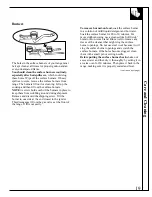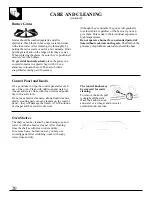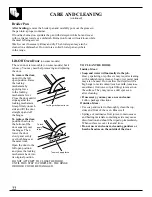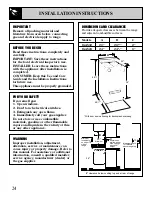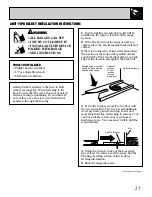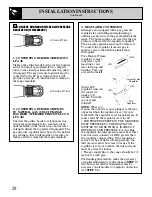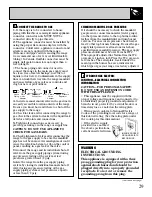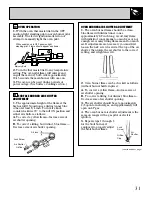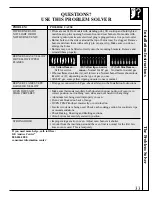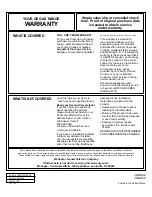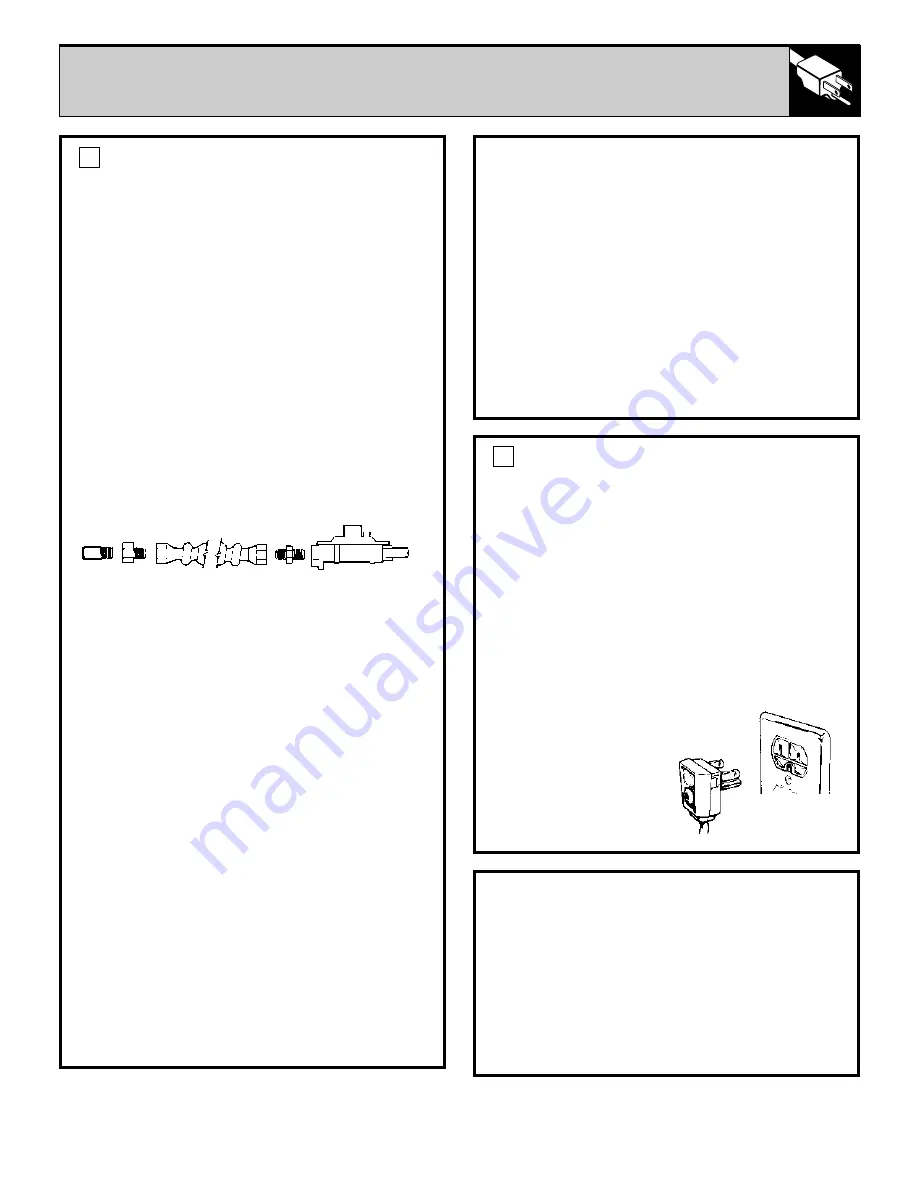
CHECKING MANIFOLD GAS PRESSURE
If it should be necessary to check the manifold
gas pressure, connect manometer (water gauge)
or other pressure device to the top burner orifice
farthest from the manifold inlet and turn burner
valve on. For an accurate pressure check have at
least 2 other top burners burning. Be sure the gas
supply inlet pressure is at least one inch above
specified range manifold pressure. The gas supply
pressure should never be over 14 inches W.C.
When properly adjusted for Natural Gas the W.C.
pressure is 4 inches, for LP Gas the W.C. pressure
is 10 inches. The serial plate, located under the
main top in the burner box area, indicates for
which type of gas your range was factory adjusted.
IF RANGE HAS ELECTRIC
IGNITION—ELECTRICAL CONNECTION
INFORMATION
CAUTION—FOR PERSONAL SAFETY:
DO NOT USE AN EXTENSION CORD
WITH THIS APPLIANCE.
• This appliance must be supplied with the
proper voltage and frequency, and connected to
an individual, properly grounded and polarized
branch circuit, protected by a circuit breaker or
time-delay fuse, as noted on the rating plate.
• Wiring must conform to National Electric
Codes or the prevailing local code for a range of
this kilowatt rating. (See the rating plate under
the cooktop for this information.)
• If the electric supply
provided does not meet
the above specifications,
call a licensed electrician.
6
WARNING
ELECTRICAL GROUNDING
INSTRUCTIONS
This appliance is equipped with a three
prong grounding plug for your protection
against shock hazard and should be
plugged directly into a properly grounded
receptacle. Do not cut or remove the
grounding prong from this plug.
CONNECT THE RANGE TO GAS
1. If the range is to be connected to house
piping with flexible or semi-rigid metal appliance
connector, connector nuts MUST NOT be
connected directly to pipe threads.
2. The appliance connector must be installed by
using the proper flare union adapters with the
connector. Cutoff valve, appliance connector and
adapters are not supplied with the range.
(Because solid pipe restricts moving the range,
we recommend use of A.G.A. certified flexible
tubing.) In Canada, flexible connectors must be
single wall metal connectors no longer than 6
feet in length.
• The house piping and connector used to
connect the range to the main gas supply must
be clean, free of metal shavings, rust, dirt or
liquids (oil or water). Contaminants in the supply
lines can work their way into the range manifold
and cause failure of gas valves or controls and
clog burners or pilot orifices.
3. Install a manual shutoff valve in the gas line in
an easily accessible location outside of the range.
Be sure you know how and where to shut off the
gas supply to the range.
4. Check for leaks. After connecting the range to
gas, check the system for leaks with a liquid leak
detector at all joints and connections.
5. Tighten all connections as necessary to
prevent gas leakage in the range or supply line.
CAUTION: DO NOT USE A FLAME TO
CHECK FOR GAS LEAKS.
6. Check alignment of valves after connecting the
range to the gas supply to be sure the manifold
pipe has not been moved. A misalignment could
cause the valve knob stem to rub on the control
panel, resulting in a gas leak at the valve.
Disconnect the range and its individual shut-off
valve from the gas supply piping system during
any pressure testing of the system at test
pressures greater than 1/2 psig.
Isolate the range from the gas supply piping
system by closing its individual manual shut-off
valve during any pressure testing of the gas
supply piping system at test pressures equal to
or less than 1/2 psig.
5
House
Piping
Flare
Union
Adapter
Flare
Union
Adapter
Nut
Nut
Appliance
Connector
Range Pressure
Regulator
INSURE PROPER
GROUND EXISTS
BEFORE USE.
29
(continued next page)
Summary of Contents for JGAS24
Page 34: ...34 NOTES...





